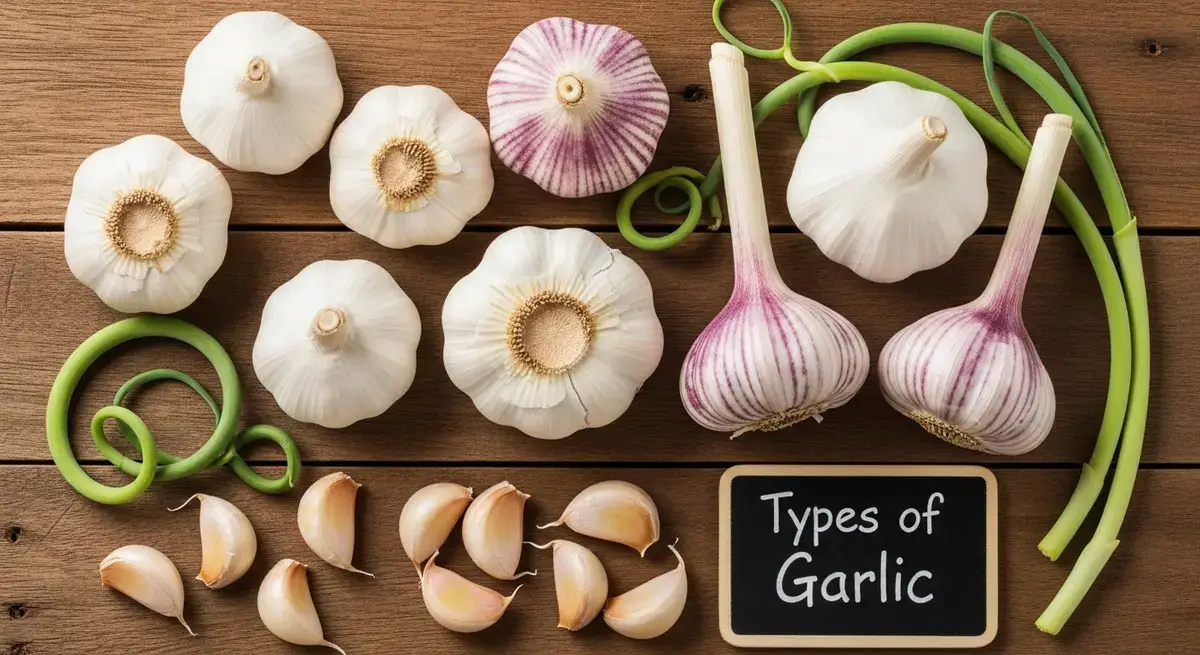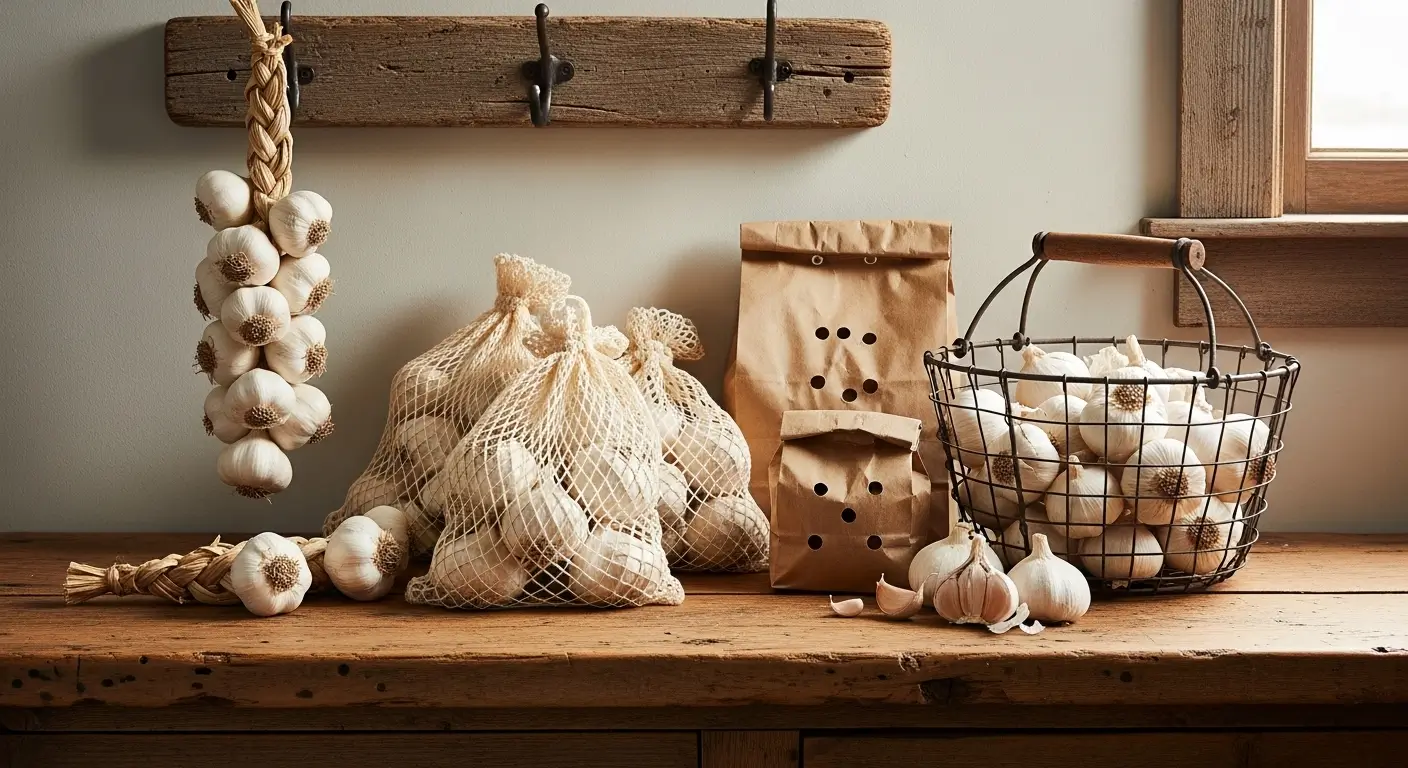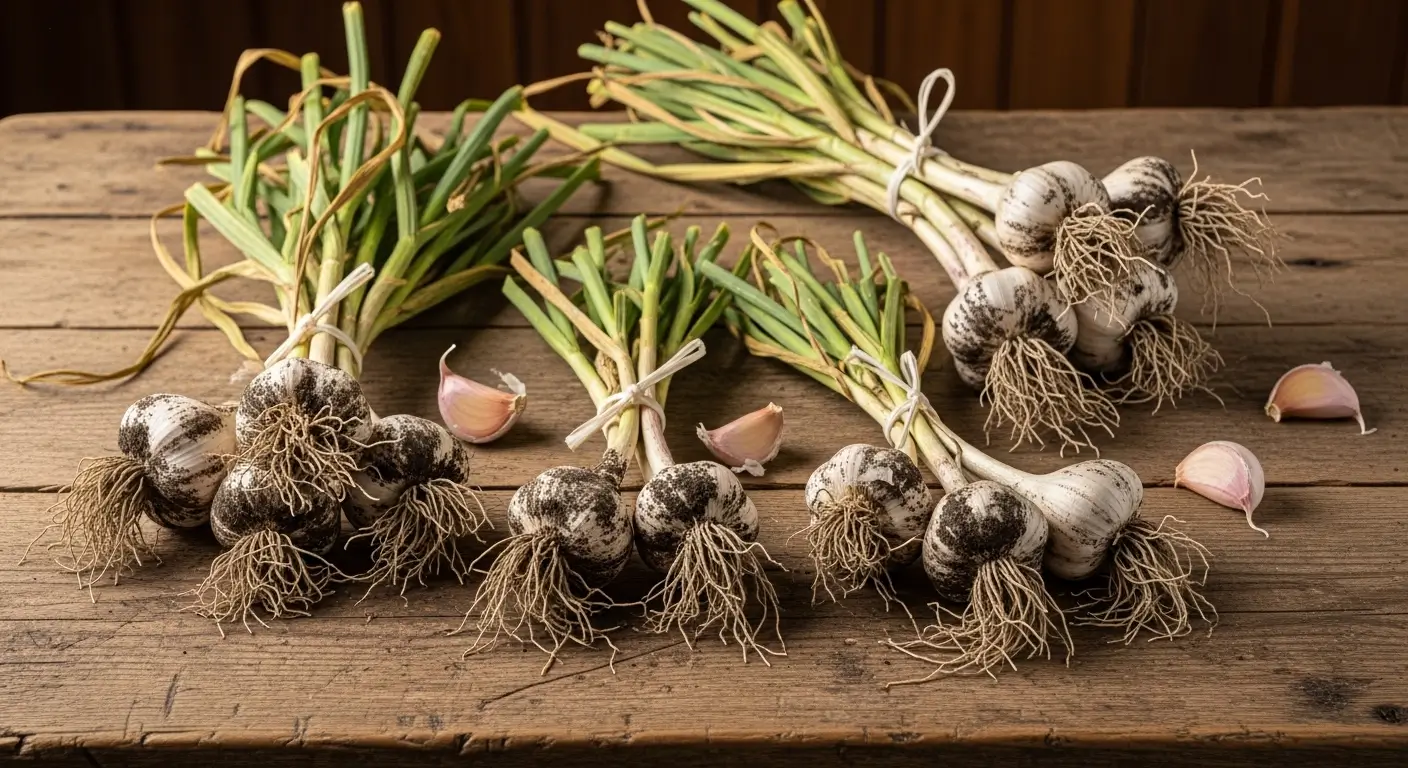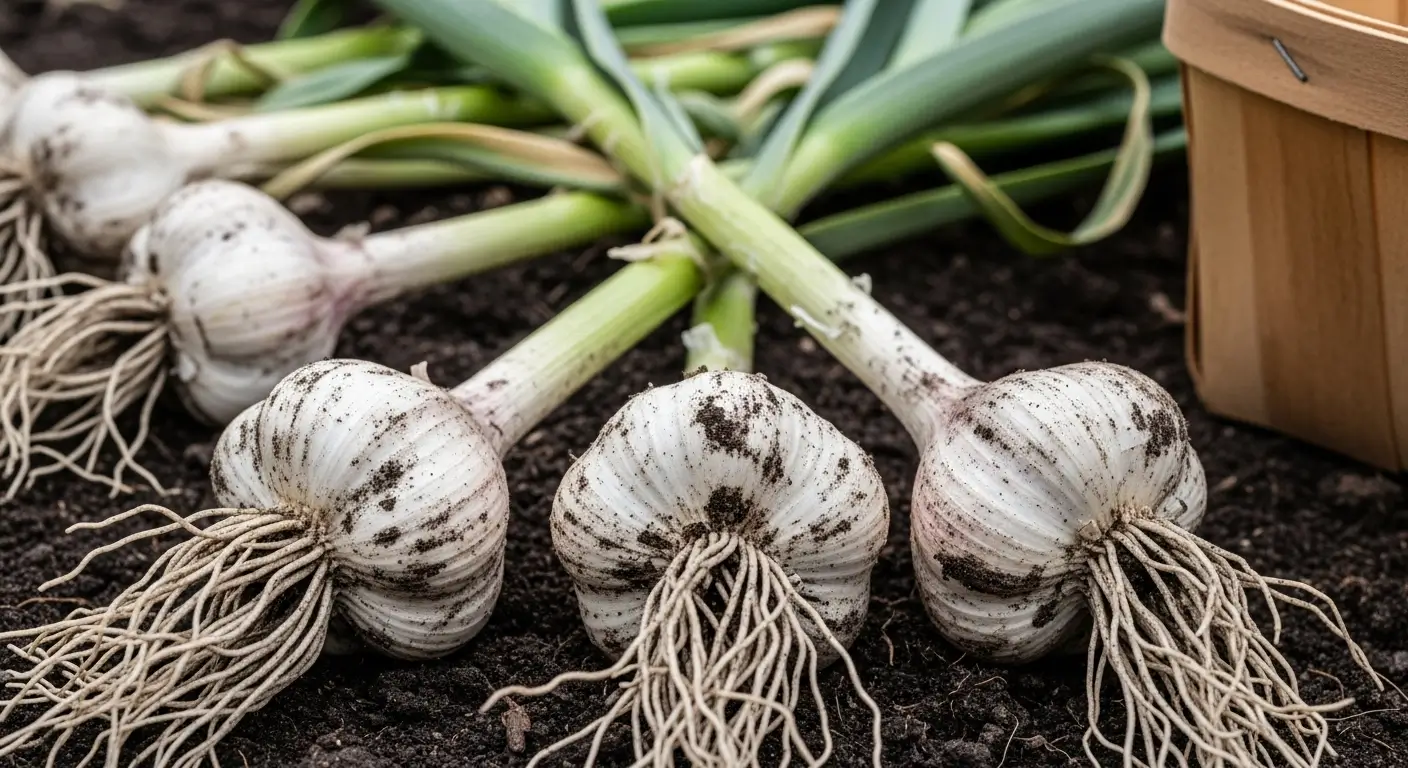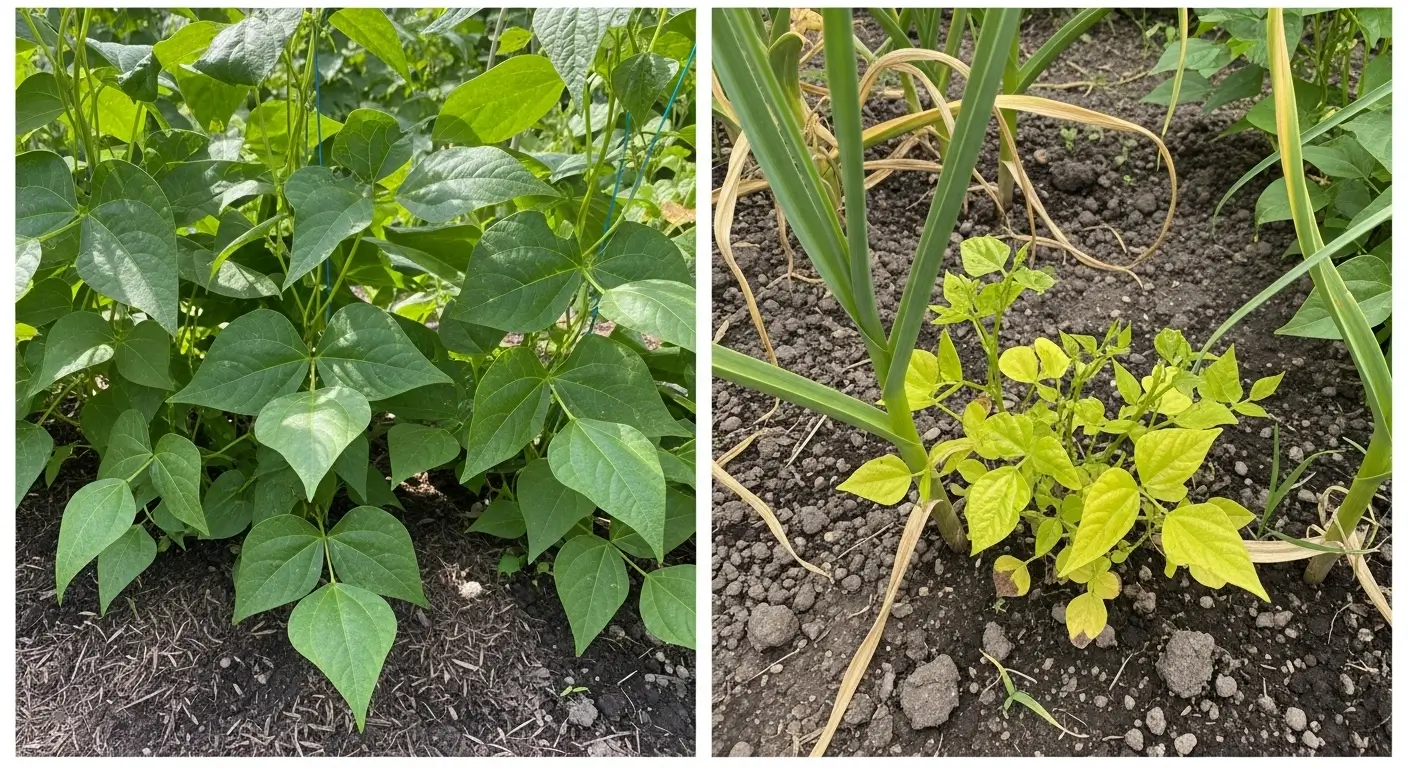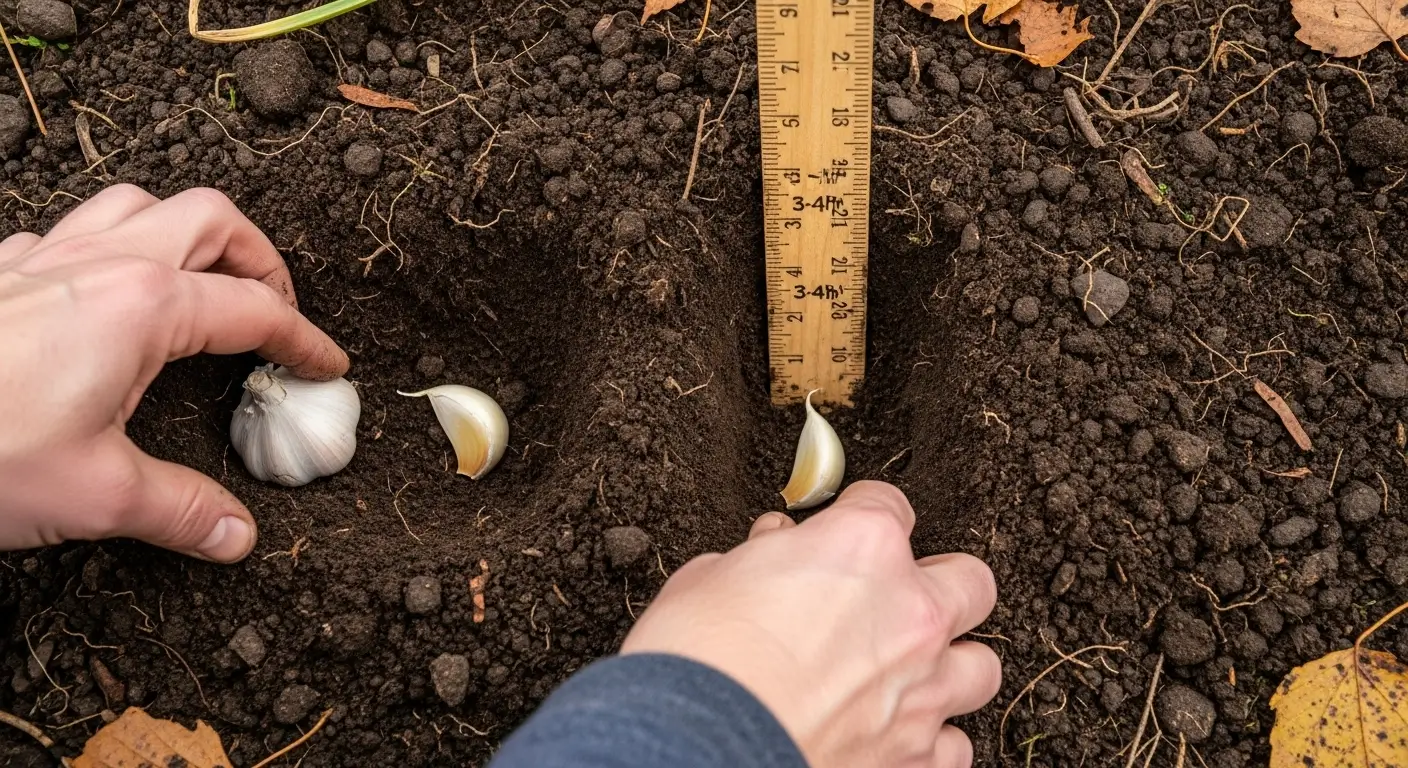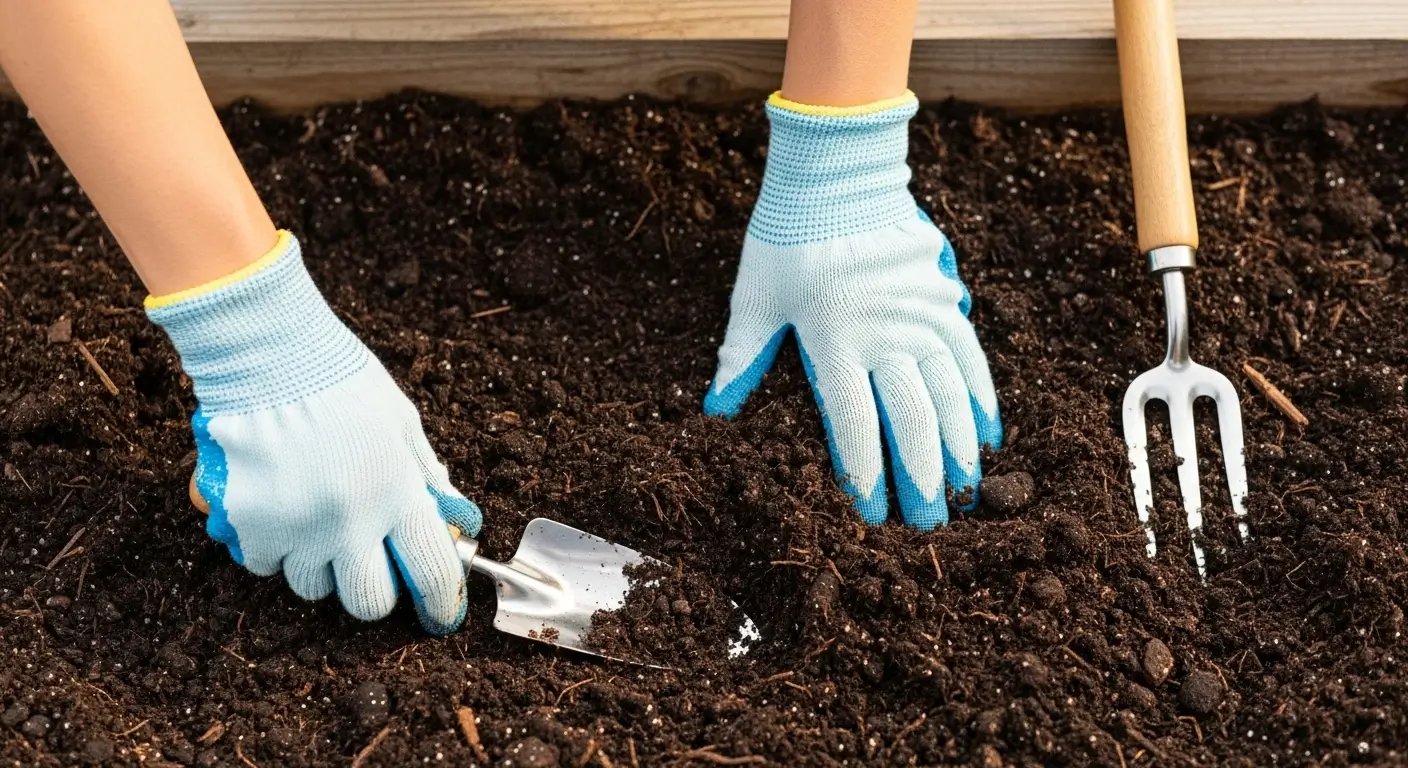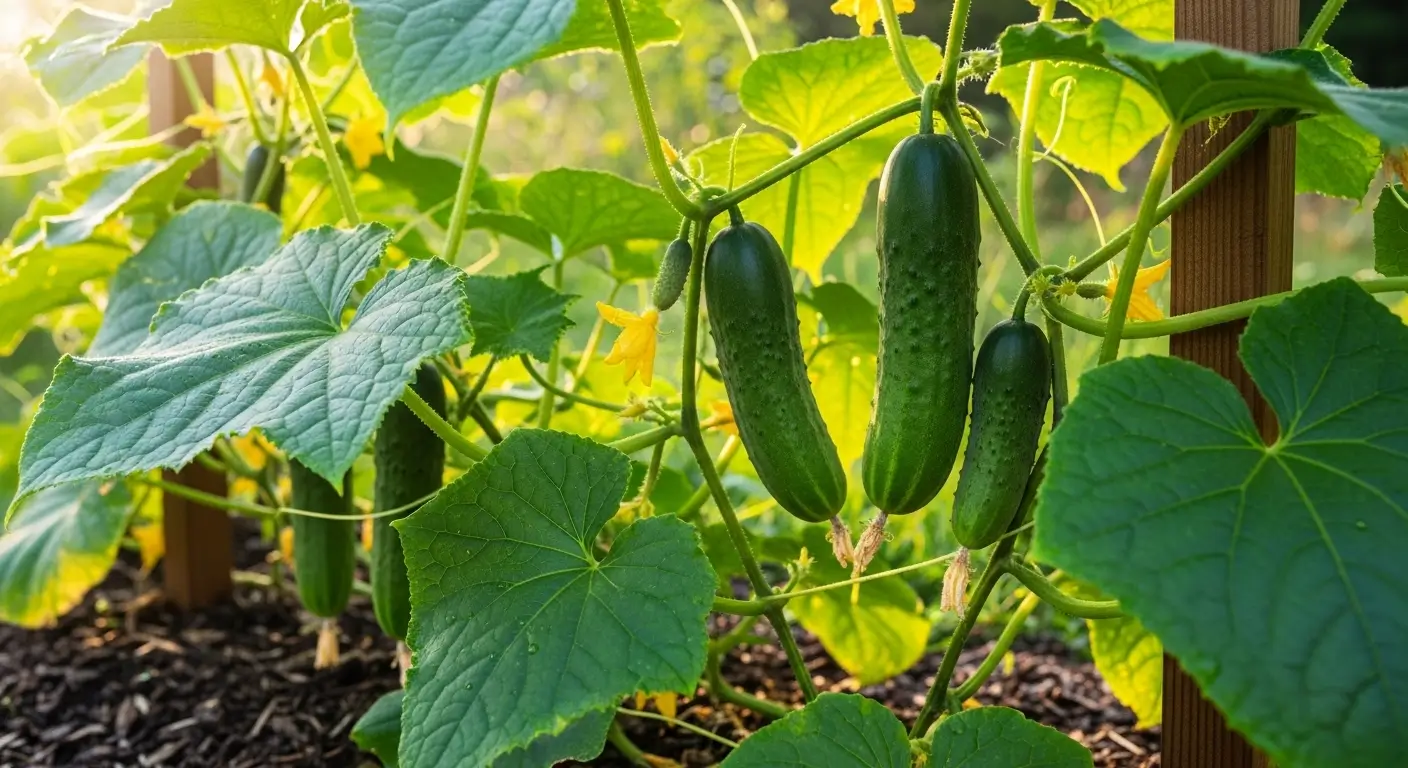So here’s a funny story – when I first got into growing garlic about fifteen years ago in my little Naperville garden, I literally thought garlic was just garlic. Like, how different could it be, right? Well, let me tell you, I was SO wrong it’s not even funny!
I made this rookie mistake of grabbing some garlic from the grocery store and planting it (don’t laugh – we’ve all been there). Spoiler alert: it was a total disaster. That failure sent me down this crazy rabbit hole of learning about garlic classification, and oh my gosh, there’s this whole fascinating world of garlic bulb types out there that completely blew my mind.
Here’s the thing – understanding the different types of garlic isn’t just some nerdy plant trivia (though I admit I’m totally into that stuff). It’s literally what makes or breaks your garlic growing success. Whether you’re just starting with your first garlic patch or you’re ready to get fancy with different varieties, knowing these key differences will save you so much heartache and help you pick the perfect garlic for your area.
Table of Contents
The Two Main Types of Garlic: Softneck vs Hardneck
Here’s where it gets interesting. All garlic falls into two main camps: softneck and hardneck. And no, these aren’t just fancy marketing names – they’re actually describing totally different types of plants that act completely different in the garden.
The big difference? It’s all about what happens when they try to flower. Hardneck garlic sends up this woody flower stalk (we call it a scape – sounds fancy, doesn’t it?), while softneck types are like “nah, I’m good” and rarely bother flowering at all. They keep their stems nice and bendy the whole time.
I know it sounds like a tiny detail, but trust me – this one little difference affects EVERYTHING. How they grow, when you harvest them, how long they’ll keep in your pantry… It’s wild how much this matters.
Hardneck Garlic: The Cold-Weather Champion
So hardneck garlic is basically the polar opposite of a sun worshipper – this stuff LOVES cold weather. I’m talking, it actually NEEDS a good freeze to make proper bulbs. Living here in Zone 5b, Illinois, with our brutal winters, hardneck varieties are my absolute go-to because they’re like “bring on the cold, baby!”
And can we talk about scapes for a sec? These are those awesome curly green shoots that pop up in late spring, and they’re basically like getting a bonus veggie from your garlic plant. I always tell people in my workshops – think of scapes as your reward for growing garlic! You cut them off (which actually helps the bulb get bigger), and boom – instant pesto ingredient. It’s like the plant is giving you a little thank-you gift.
Here’s what makes hardneck garlic tick:
- Needs about 4-6 months of temps below 45°F (yeah, it’s picky like that)
- Sends up those flower stalks (scapes) that you’ll want to snip off
- Way more complex, bold flavors that’ll wake up your taste buds
- Doesn’t store as long (4-6 months if you cure it right)
- Usually has 4-12 cloves hanging around a woody center stem
The flavor thing is no joke – I’ve grown hardneck varieties that range from “oh that’s nice” to “holy moly, clear the sinuses!” Some are sweet and mellow, others will make you do that little gasp thing when you bite into them. It’s like a flavor adventure every time.
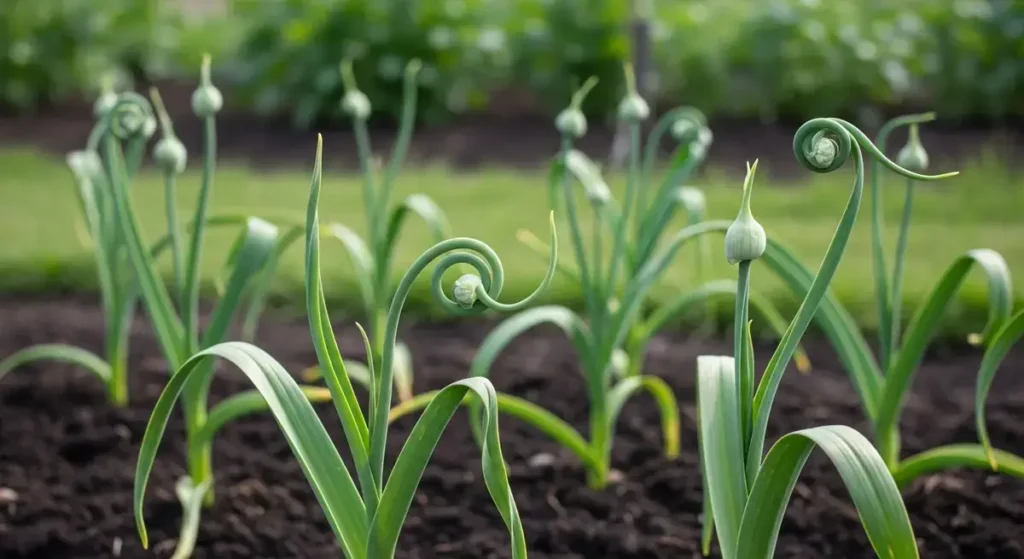
Softneck Garlic: The Storage Superstar
Now softneck garlic? These guys are the total workhorses of the garlic world. They’re what you’ll find in pretty much every grocery store because they’re incredibly reliable and store like nobody’s business. Plus, they make those gorgeous braids you see hanging in fancy kitchens.
Since they don’t need that cold snap to get their act together, softneck varieties are perfect for folks living in warmer spots where hardneck types would sulk and refuse to grow properly. And those flexible stems? My grandmother taught me how to braid them, and let me tell you, there’s something so satisfying about hanging a beautiful garlic braid in your kitchen.
What makes softneck garlic awesome:
- Happy in warmer places (think Zones 8-10)
- Almost never bothers with flower stalks
- Storage champions (we’re talking 6-10 months, sometimes more!)
- Packed with cloves (like 12-20 little guys all crammed in there)
- Milder, more predictable flavors that won’t surprise you
The taste is way more chill and consistent compared to those wild hardneck varieties. They’re perfect for everyday cooking when you want good garlic flavor without any drama. Most garlic powder and processed garlic come from these reliable little guys.
The Eight Types of Garlic: A Deeper Dive
Okay, so remember how I said there are two main types? Well, plot twist – within those two groups, garlic nerds (and I say that with love because I’m totally one of them) have identified eight distinct varieties. Each one has its own personality quirks that affect how it grows, what it looks like, and how it tastes. It’s like garlic has its own little family tree!
Hardneck Varieties
Rocambole: This is what garlic snobs call the “true” garlic, and honestly? I get why they’re so obsessed. Rocambole varieties have these loose, papery wrappers and the most perfect curved scapes you’ve ever seen. The cloves practically peel themselves, and the flavor is just… chef’s kiss… rich and complex without making you cry. If you’re new to hardneck growing, start here – they’re super forgiving.
Porcelain: Holy moly, these are the giants! I’m talking about bulbs with just 4-6 cloves, but each clove is MASSIVE. The wrappers are thick and white like actual porcelain (hence the name – gardeners aren’t that creative, apparently). They’re tough as nails and store better than most hardneck types. I’ve had amazing luck with these in my Illinois garden – they’re like the gentle giants of the garlic world.
Purple Stripe: Exactly what it sounds like – gorgeous purple stripes on the bulb wrappers. They’re super flavorful and store pretty well for hardneck types. Here’s a cool thing: purple stripes can handle slightly warmer areas than other hardneck varieties, so they’re like the diplomatic bridge between hardneck and softneck worlds.
Glazed Purple Stripe: These are basically the fancy cousins of regular purple stripes. Instead of just purple stripes, they’ve got this shiny, glazed look to their purple markings. Chefs go crazy for these because the flavor is just incredible.
Marbled Purple Stripe: Think of these as the artsy ones in the purple stripe family. Instead of clear stripes, they’ve got this subtle marbled purple thing going on. Super hardy and reliable – the kind of garlic that just quietly does its job without any fuss.
Softneck Varieties
Artichoke: This is your basic, reliable grocery store garlic. They call it artichoke because the cloves are arranged in layers like… well, like an artichoke! These guys are the dependable workhorses – they’ll give you decent-sized bulbs, store well, and have a nice mild flavor that won’t offend anyone. Not the most exciting, but sometimes you want garlic that behaves itself.
Silverskin: These are the marathon runners of the garlic world – we’re talking 9-12 months of storage if you cure them right. They’ve got these bright white wrappers and tend to pack some serious heat. Plus, their stems are super strong and flexible, making them perfect for braiding. If you want garlic that’ll last you almost a full year, these are your guys.
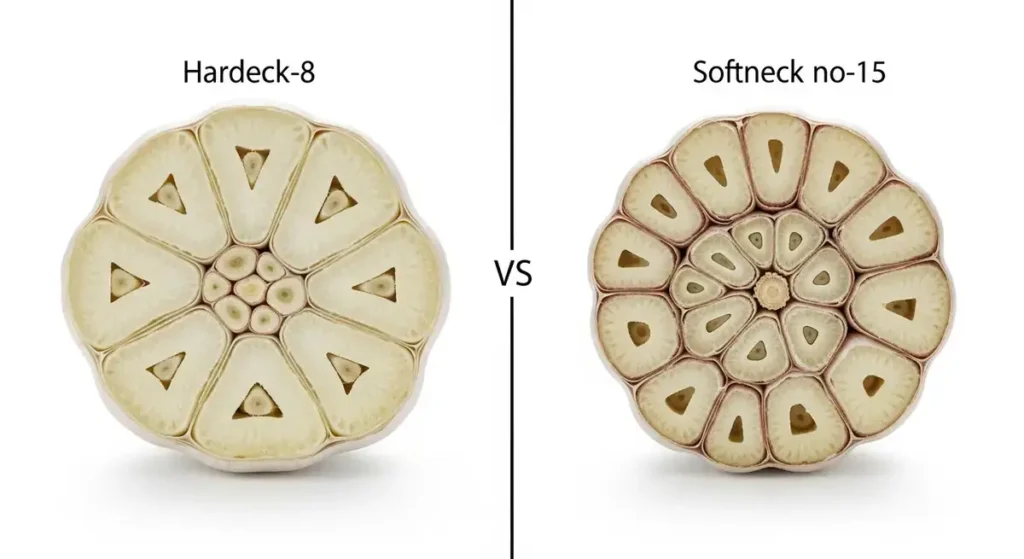
The Oddball: Creole Garlic
Creole: Okay, so Creole garlic is like that friend who doesn’t quite fit into any category but somehow makes everything more interesting. It’s not really hardneck or softneck – it’s just doing its own thing. These varieties are made for hot, humid places (think Deep South), and they’re the only option that actually thrives down there. Sometimes they’ll throw up a scape, sometimes they won’t. They’re basically the rebels of the garlic world.
Choosing the Right Garlic Types for Your Garden
Let’s be real—your climate plays a huge role in determining which garlic varieties will thrive in your garden. I always tell folks at my workshops: start by falling in love with the types that actually suit your region. Once you’ve got those down, then you can dream about the more exotic kinds. I’ve seen far too many gardeners end up disappointed after planting garlic that simply wasn’t right for their zone. Not sure what your growing zone is? Take a moment to check the USDA Plant Hardiness Zone Map—it’ll help you choose the right varieties from the start.
If you’re dealing with cold winters (Zones 3-7): Go hardneck or go home! Seriously, focus on Rocambole and porcelain types – they’ll give you the best shot at success and the most amazing flavors. In my Zone 5b garden, I’ve had incredible luck with varieties like ‘Music’ (it’s a porcelain type), ‘German Red’ (rocambole), and a bunch of different purple stripe varieties. They thrive in our harsh winters.
Living the warm life (Zones 8-10): Softneck is your best friend here. Artichoke and silverskin types are super reliable and won’t let you down. And if you’re down in the Deep South, dealing with all that humidity? Definitely check out creole varieties – they’re specifically designed for your crazy hot, sticky summers.
Stuck in the middle (Zones 7-8): Oh, you lucky ducks! You can grow both types, depending on your exact microclimate. This is where it gets fun – try a little of everything and see what likes your particular garden. It’s like garlic speed dating!
🧄 Find Your Perfect Garlic Variety!
Growing Tips for Different Garlic Types
Okay, so each type of garlic has its own little quirks and preferences – kind of like people, really. I’ve learned these through years of trial and error (and let me emphasize the ERROR part… I’ve murdered my fair share of garlic plants over the years!).
Depth Matters (Who Knew?) So here’s something that took me way too long to figure out: hardneck varieties need to go deeper in the ground than softneck ones. It’s all about that winter protection they need. I plant my hardneck garlic about 2-3 inches deep, while softneck gets the shallow treatment at 1-2 inches. Seems simple now, but I spent years wondering why some of my garlic looked so sad in spring!
Timing Is Everything (And I Mean EVERYTHING) Hardneck garlic is super picky about when you plant it. You’ve got to get it in the ground about 4-6 weeks before that first hard frost hits – enough time to grow roots, but not so early that it starts putting up green shoots. Softneck varieties are way more chill about timing, especially in warmer areas where you can sometimes plant as late as January. (I know. January!)
The Great Scape Situation Here’s where it gets fun – only hardneck varieties give you scapes, and you HAVE to cut them off for good bulb development. I usually harvest mine when they’ve done one or two curls. And please, for the love of all that’s holy, don’t toss those scapes! They’re amazing in stir-fries, make killer pesto, or you can just grill them as a side dish. It’s like getting free vegetables from your garlic!
Culinary Uses for Different Garlic Bulb Types
So here’s where things get fun – the flavor differences between garlic varieties aren’t just some gardening geek thing. They actually make a huge difference in your cooking! I’ve spent years figuring out which types work best for different dishes, and let me tell you, it’s been a delicious journey.
The Mild Ones (Most Artichoke and Some Silverskin): These are perfect when you want garlic flavor without the drama. Think salad dressings, aioli, or anywhere you’re using raw garlic and don’t want to scare people away. They’re also fantastic for roasting whole – they get all sweet and caramelized without any harsh bite.
The Goldilocks Zone (Most Rocambole and Some Purple Stripe): These are my everyday workhorses. They’ve got great garlic flavor without being too aggressive, so they’re perfect for pretty much everything – sautéing, soups, pasta dishes, you name it. They’re like the reliable friend of the garlic world.
The Fire Breathers (Some Porcelain and Many Silverskin): Use these bad boys when you want garlic to be the STAR of the show. They’re incredible in dishes where garlic is supposed to dominate – like aglio e olio pasta or when you’re making a garlic-forward sauce that needs to pack a punch.
Storage Considerations by Garlic Type
Okay, this is something I’m always hammering home in my workshops because it’s SO important – different garlic varieties have wildly different storage lives. Like, we’re talking months of difference here, which totally affects how much you should plant and how you plan your meals.
Hardneck varieties are the sprinters of the storage world – they generally keep for about 4-6 months when you cure them properly. Porcelain types usually last the longest of the hardneck bunch. The secret is good curing – I hang all my hardneck garlic in a warm, dry, airy spot for 2-3 weeks after harvest. It’s like garlic yoga or something.
But softneck varieties? These guys are the storage marathon champions! We’re talking 8-10 months, sometimes even longer. Silverskin varieties are insane – I’ve had properly stored silverskin garlic last almost a full year. It’s like they have superpowers or something.
This storage difference is practical when you’re planning your garden. I typically plant way more hardneck varieties since I know I need to use them first, and then smaller amounts of those long-storing softneck types to carry me through the year.
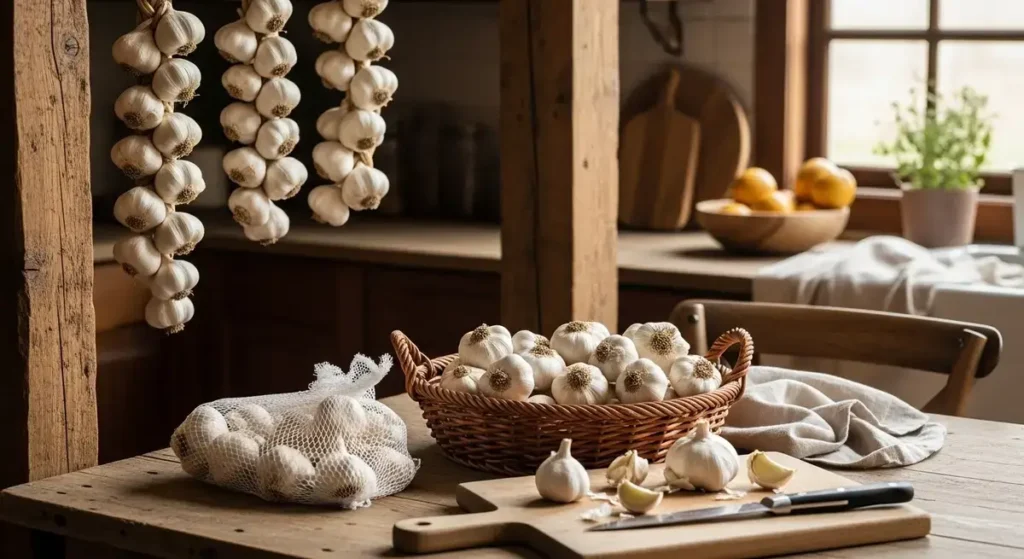
Common Mistakes When Growing Different Garlic Types
Oh man, after fifteen years of growing garlic and helping tons of other gardeners figure out why their garlic crop failed, I’ve seen the same mistakes over and over again. Most of them boil down to not understanding that different garlic types have totally different needs – kind of like trying to treat a cat like a dog, you know?
The Big One: Wrong Type for Your Climate. This is the mistake that breaks my heart the most because I see it ALL the time. I can’t even count how many gardeners have come to me completely bummed out because their garlic was a disaster, only to find out they were trying to grow softneck varieties in Minnesota or hardneck types in Florida. It’s like trying to grow palm trees in Alaska – it’s just not gonna happen!
The Scape Confusion: This one’s funny. New growers either panic when their hardneck garlic sends up scapes (thinking something’s wrong) or they get worried when their softneck varieties DON’T produce scapes (also thinking something’s wrong). Then there are the folks who don’t remove the scapes from hardneck varieties and wonder why their bulbs are tiny.
Harvest Timing Drama Different garlic types have totally different ways of telling you they’re ready. Hardneck varieties are pretty straightforward – when the bottom leaves turn brown but you still have several green ones, you’re good to go. But softneck varieties are trickier since they don’t have those helpful scapes as indicators. I’ve seen people harvest way too early or wait way too long because they didn’t know what to look for.
If you want to get really nerdy about timing your harvest perfectly, definitely check out my complete guide to garlic growth stages – it walks you through the whole growing cycle from planting to harvest, so you’ll know exactly what to expect.
Fertilizing Different Garlic Types
So here’s something that took me a while to figure out – while all garlic basically wants the same thing (rich, well-draining soil with lots of good organic stuff), the different types do have some quirky preferences when it comes to feeding.
Hardneck varieties are like that friend who needs extra snacks during a long hike. Since they’ve got that longer growing season and have to put energy into making those scapes, they often appreciate a little extra feeding when spring rolls around and growth picks back up. I usually give mine a side-dressing of compost or hit them with some balanced organic fertilizer when the shoots are about 6 inches tall.
Softneck varieties are way more low-maintenance (shocking, I know). They can cruise along fine with good soil prep at the beginning and one feeding during the growing season. Since they’re not wasting energy on scapes, they can focus all their attention on making those bulbs nice and plump.
If you want to get into the nitty-gritty details about feeding your garlic (including variety-specific tips that I’ve learned the hard way), check out my detailed fertilizing garlic guide. It’s got everything you need to keep your garlic happy and well-fed.
Key Takeaways for Garlic Success
Alright, let’s wrap this up with the stuff that matters. Understanding the main types of garlic is honestly the make-it-or-break-it factor for growing success, but here’s what you absolutely need to remember:
- Your climate is EVERYTHING – seriously, pick hardneck for cold places, softneck for warm spots, and don’t try to fight Mother Nature on this one.
- Each variety is like a different personality – they all have their quirks that affect how they grow, taste, and store.
- Getting the right variety eliminates like 90% of garlic problems – I’m not even exaggerating here.
- The flavor differences are legit and can totally level up your cooking when you match them right.
- Storage time varies like crazy between types, so plan accordingly when deciding how much to plant.
The whole world of garlic varieties is honestly so much fun to explore. My advice? Start with whatever’s proven to work in your area, then go wild experimenting with different types as you get more confident. There’s seriously nothing like the moment when you harvest your own garlic – the flavors are incredible, you feel like a total gardening rockstar, and you’ll never want to buy that sad grocery store stuff again.
If you’re ready to dive headfirst into this whole garlic-growing adventure, definitely check out my comprehensive guide on how to grow garlic. It’s got everything from soil prep to harvest and storage – basically everything I wish someone had told me when I was starting out.
So what’s your garlic story? Have you tried growing both hardneck and softneck varieties? I’m dying to hear about your successes (and hey, your failures too – we’ve all been there!). Please drop a comment below and let’s chat. And if you’re just getting started and have a million questions, don’t be shy – the garlic growing community is seriously the friendliest bunch of people you’ll ever meet, and we love helping newbies succeed!
